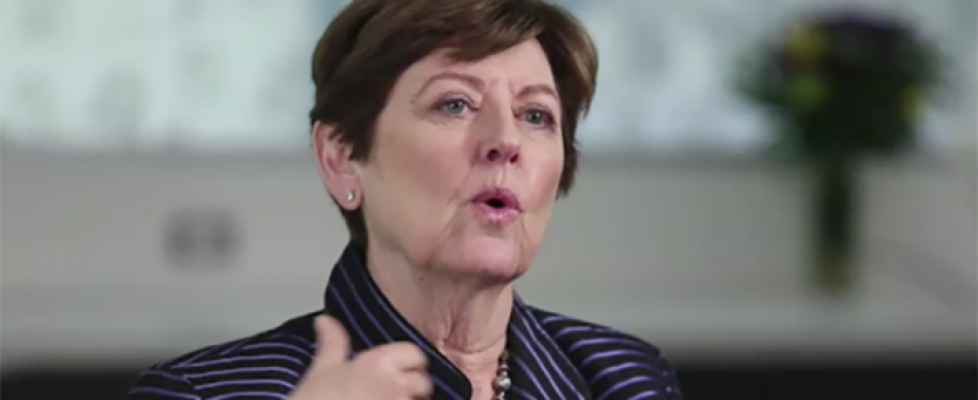Taskforce on Telehealth Policy releases final report on safeguarding virtual care
Its recommendations include lifting limitations on originating sites, allowing telehealth for various types of conditions and reinstating the HIPAA provisions temporarily lifted during the public health emergency.
By Kat Jercich September 15, 202002:01 PM
The Taskforce on Telehealth Policy released a final report on Tuesday outlining its findings and recommendations around safeguarding the future of telehealth after the COVID-19 pandemic.
The task force, which was convened by the National Committee for Quality Assurance, the Alliance for Connected Care and the American Telemedicine Association, represented a broad spectrum of stakeholders who spent the summer building consensus around the challenges and opportunities for virtual care.
“We pulled together an incredible group of people who really can see the potential for telehealth and want to make sure that it’s not going to be a thing that just happened during COVID-19 and goes away again,” said NCQA President Peggy O’Kane in an interview with Healthcare IT News. “People do see the potential here for a better experience for patients, better outcomes.”
“For years, many of us in healthcare have been trying to promote telehealth and the advantages of it,” said Dr. Regina Benjamin, founder and CEO of the Bayou La Batre Rural Health Clinic and former Surgeon General of the United States, to Healthcare IT News.
“When COVID happened, we were faced with [needing] another option to get people care. And it was there,” she said.
WHY IT MATTERS
As the report notes, the COVID-19 crisis acted as a catalyst to transform telehealth from a niche passion to an in-demand modality.
Before the pandemic, O’Kane said, “There had been sort of a science project attitude toward telehealth.”
“People were promoting it, and they couldn’t get adoption,” O’Kane continued. “The payment was less, there were regulatory barriers, so it sat there until it was really needed. And then boom, it came in with a bang.”
The task force report outlined a number of findings and recommendations in the wake of this uptick.
Regarding patient safety, the task force found that the evidence base for telehealth is strong, particularly when it comes to the remote management of chronic conditions. It recommends that Congress continue funding research efforts to identify what does, and what does not, work in terms of advancing telehealth patient safety.
It also recommends that policymakers identify and recommend minimum standards for assessing and ensuring patient safety via telehealth and integrate them into existing standards, rather than layering new standards on top.
The task force pointed to the opportunity for new innovations regarding remote patient monitoring and chronic care management.
“Health doesn’t occur just in the doctor’s office; it occurs everywhere we are and in everything we do,” said Benjamin.
She noted that after Hurricane Katrina, telecommunications companies gave individuals phones with a limited number of minutes on them. Insurance companies or federal agencies, she suggested, could do the same thing with remote monitoring devices to safeguard access.
“It’s important that we don’t add to the cost of healthcare unnecessarily, but if we’re adding to patients’ improvement and adding to their health and the community’s health … logic will tell you it’ll be less costly,” she said.
“I hope for tons of innovation in the space,” said Chris Meyer, director of virtual care at the Wisconsin-based Marshfield Clinic.
“With more care being delivered … how do you get temps and blood pressure more consistently and reliably? Innovation will be the solution, but it will take some time,” he said.
The task force in its report recommended lifting geographic restrictions and limitations on originating sites – a broadly popular measure among stakeholders and legislators.
In addition to blocking access for people in major cities who may benefit from telehealth access, Meyer noted such existing rules may seem counterintuitive for clinicians in less urban areas.
He pointed out that Eau Claire, Wisconsin, with a population of less than 100,000, is considered an urban area. “If you have more cows than people in your county, that has to be rural,” he quipped.
“That has been a barrier for providers who don’t want to get involved in the minutiae of [deciding] which patients can participate,” he continued.
Other task force recommendations included allowing telehealth for various types of clinicians and conditions; acknowledging that telehealth visits can meet requirements for establishing a clinician/patient relationship; and eliminating unnecessary restrictions on telehealth across state lines. The report noted that broadband access is not available to all patients, so policymakers should expand efforts to ensure its universal availability.
Policymakers should also “look closely” at the effect of expanding prescribing authority to telehealth and should fully reinstate enforcement of HIPAA protections that were suspended at the start of the public health emergency, said the task force report.
THE LARGER TREND
The future of telehealth has been the center of many stakeholder conversations over the summer, with legislators signaling their support for changes such as lifting the originating site restrictions and expanding the type of visits allowed virtually.
Payment and coverage questions are somewhat thornier, though. Some clinicians say uncertainty around payment models has made them reluctant to fully implement long-term virtual care in their practice.
Recently, MedPAC members convened to suggest that providers who were part of a value-based payment model might be granted telehealth flexibilities that those in fee-for-service models would not be. Discussion is ongoing.
ON THE RECORD
When it comes to legislative response to the report, task force members were optimistic.
“We’re talking about increasing access – always a good thing on the left side of the aisle, and we’re talking about decreasing costs – always a good thing on the right side of the aisle,” said Meyer.
“Technology can help us,” added Benjamin. “This is the way we’re going to have to move toward having healthcare in the future.”

